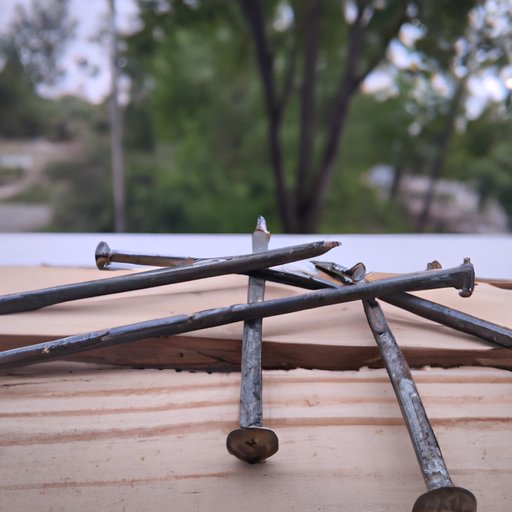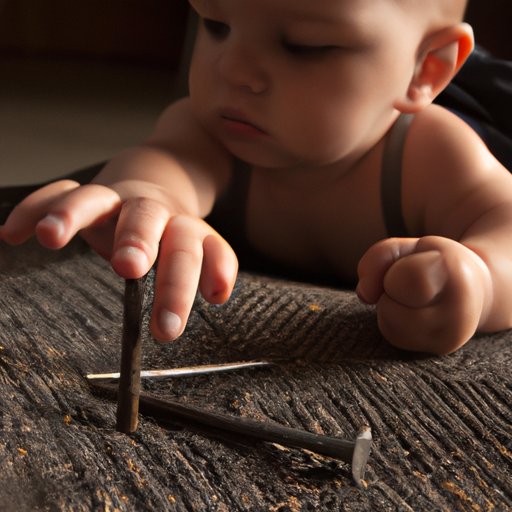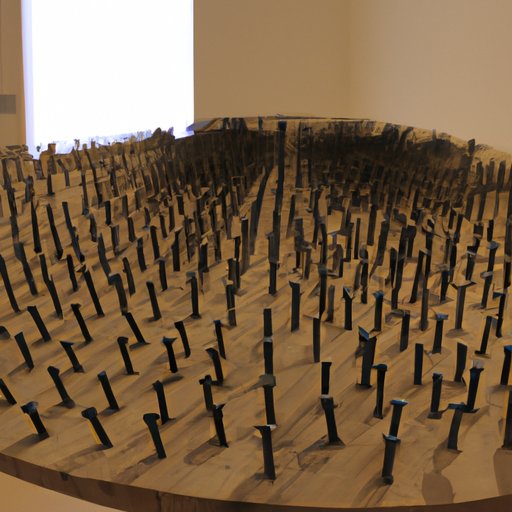Introduction
Nails are a common tool and building material used in many applications from carpentry to construction. But when were nails first invented? This article will explore the history of nail making and its impact on modern society. From ancient Egyptian and Greek cultures to medieval Europe, discover when nails were first created and how they have changed the way we build.

Historical Overview of Nail Invention
The earliest known nails date back to Ancient Egypt, where nails were made from bronze and copper. They were used for fixing wooden planks together in boats, chariots, and furniture. According to the Journal of Archaeological Science, “the use of nails in woodworking was well established by the time of the New Kingdom (1550–1069 BC).”
In Ancient Greece, nails were made from iron, which was considered a more durable material than bronze or copper. They were most commonly used for construction purposes. Iron nails were also used in furniture-making and other craft projects. By the Middle Ages, iron nails had become even more popular in Europe due to their strength and durability.
Evolution of Nail Making Techniques
The process of making nails has evolved over time, from hand-forging to machine-made production. Hand-forged nails were made by heating iron bars in a forge and then hammering them into shape with a nail punch and anvil. This was a slow and labor-intensive process that required a great deal of skill and experience.
By the 19th century, machines were being used to make nails. These machines could produce thousands of nails in a single day, making the process much faster and easier. Today, modern machines can produce millions of nails per hour using a variety of materials such as steel, aluminum, and titanium.
The modern nail manufacturing process involves cutting the wire into small pieces, forming them into nail shapes, and then hardening and tempering the nails to make them stronger. The nails are then coated with a protective finish to prevent corrosion.

How Nails Have Changed the Way We Build
Nails have been used in construction since ancient times, but the invention of machine-made nails revolutionized the industry. Nails are now used in a wide range of construction projects, from framing walls to installing roofing. They are also used in home improvement projects, such as hanging pictures and shelving.
Nails are also used in furniture-making, from traditional woodworking to modern metalworking. Nails are essential for joining pieces of wood and metal together, allowing for stronger and more durable furniture. Without nails, many of the furniture designs we know today would not be possible.

Investigating the First Use of Nails
The use of nails dates back to Ancient Egypt, where they were made from bronze and copper. They were used primarily for boatbuilding and furniture-making. In Ancient Greece, iron nails became more popular due to their strength and durability. By the Middle Ages, iron nails had become commonplace in Europe.
The first evidence of the use of nails in construction comes from the tomb of Pharaoh Djoser, who died in 2667 BC. According to the journal Antiquity, “The tomb contained hundreds of large wooden beams, which were held together with nails.”
In Ancient Greece, nails were used for a variety of construction projects, including shipbuilding and housebuilding. In the Middle Ages, nails were used in the construction of castles and cathedrals. By the 16th century, nails had become an essential part of everyday life, used for everything from furniture-making to roofing.
Exploring the Impact of Nail Technology on Society
The invention of nails has had a huge impact on society. The increased efficiency of nail technology has allowed for bigger and more complex structures to be built. Nails have also improved safety standards in construction, as they provide a better way to join materials than glue or other adhesives.
Nails have also made it easier to access a wider range of materials. For example, nails can be used to join different types of wood or metal, allowing for more creative and unique furniture designs. Finally, nails have made it easier to repair and replace damaged materials, reducing waste and saving time and money.
Conclusion
Nails have been used in construction since ancient times, but their invention has had a profound impact on society. From hand-forged nails to modern manufacturing processes, nails have revolutionized the way we build. By allowing us to access a wider range of materials and improve safety standards, nails have changed the way we construct buildings and furniture.
(Note: Is this article not meeting your expectations? Do you have knowledge or insights to share? Unlock new opportunities and expand your reach by joining our authors team. Click Registration to join us and share your expertise with our readers.)
